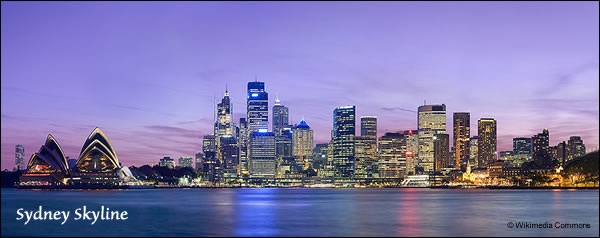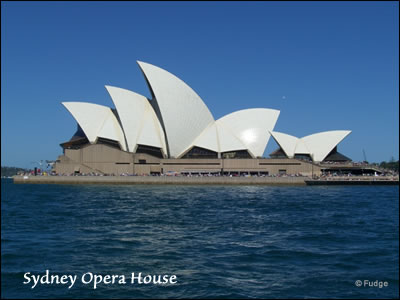I think most people in the world know that Sydney was founded as a penal colony; a group of convicts and their gaolers, sent by the British Government to the far side of the world in 1788.
Today, some claim the arrival of the English was an invasion, but it was not intended as such. Arthur Phillip hoped to live peacefully with the ‘natives’ and trade with them, but I don’t think he realised how difficult this would be, how un-exposed they were to the ideas of ‘ownership’ and ‘settlement’.

The local Aborigines lived around the harbour, along the beaches, rivers and creeks in small tribal groups for thousands of years. In the first years of the colony, a disease, thought to be smallpox, decimated the local Aboriginal population, although it did not occur in the colony itself.
What became known to us as the ‘First Fleet’ consisted of 11 ships (6 to transport the convicts, 3 stores ships and 2 naval escorts) with around 850 convicts, 300 marines and officers and their families and about 300 ships crew, which set off from England in May 1787. They stopped in Tenerife, Rio de Janeiro and Cape Town, in each place replenishing water and supplies.
This remarkable voyage was completed when they reached Botany Bay in mid-January 1788. It has been said that this was one of the world’s greatest sea voyages — 11 vessels carrying about 1400 people and stores, travelled for 252 days, over 24,000 km (15,000 miles) without losing a ship, and only 48 people had died on the voyage.

Captain Arthur Philip, commander of the voyage and the first governor of the colony, first anchored in Botany Bay, recommended by Captain James Cook and botanist, Joseph Banks, as a suitable site, but found the bay too shallow for safe anchorage. After a short exploration, Philip brought the 11 ships into a harbour named Port Jackson and chose a cove on the southern side which had plentiful fresh water and a deepish anchorage. This area is called Sydney Cove and is still at the heart of Sydney. On 26th January 1788, they raised the Union Jack and declared the colony to be named Sydney Town, after the Home Secretary, Thomas Townshend, Lord Sydney.
Just imagine those first few weeks, camping out in tents, thousands of miles from ‘home’, knowing that you could only depend on the supplies on the ships. There was no other town to run away to, although several did try. Could they hunt the local animals, grow vegetables and crops? They arrived in mid-summer – it would have been hot, humid and stormy, as our summers are, with the sounds of cicadas and the smell of eucalyptus filling the air.
The colony struggled for several years, almost to the brink of starvation, restricted by the lack of a reliable food supply and skilled workers. Arthur Phillip saw from the beginning that the colony could not continue to exist as a penal colony indefinitely and encouraged the convicts to settle after their sentence was completed.
By the time Governor Lachlan Macquarie arrived in 1809, there were some free settlers and the second settlement at Parramatta was well established. However the great barrier to the inland, the Blue Mountains, was not crossed until 1813. Once a way had been found inland to fertile grasslands, settlers were encouraged to take up land to provide food for the colony. Sydney itself grew along the southern shores of the harbour.
In the 1830/40s, the great famine in Ireland and the growing industrialisation of Britain encouraged many people to migrate to New South Wales (NSW) and find a new life in that strange land. Most of my ancestors who came to the colony, came between 1838 and 1863, found a job or started a business and brought up their families.
In the 1850s gold was discovered in NSW and Victoria, bringing an influx of migrants who wanted to make their fortunes. When their luck ran out, they came back to the towns and found work, as few could afford the fare to go ‘home’.

Sydney grew in the area that is now the ‘Central Business District’. Where once our earliest immigrant ancestors lived, were born and sometimes died, are commercial buildings, some soaring office towers. More recently, towers of apartments have brought life back into the city, with more residential accommodation encouraging people to live and work in the city. The suburbs grew eastwards towards to the coast, south towards Botany Bay and westwards through Pyrmont to Glebe and Balmain.
When the railway opened from Sydney to Parramatta in 1855, more suburbs along the line grew as workers congregated there and commuted to Sydney for work. My husband’s ancestors settled at Glebe and Pyrmont. Most of my early ancestors did not settle in Sydney, the first were Edmund Collis and Charles Tupper who settled their families in Burwood, on the road to Parramatta. They were blacksmiths, and the main road was an obvious place to have their business.
The northern shore was the playground of the wealthy, the only access by boat. Manly became known as ‘seven miles from the city, a thousand miles from care’. One of my husband’s great grandfathers, and one of mine, bought property close to Manly and the beaches, when they reached the high point of their working life, and moved there before retirement. Sadly, my great grandfather, William Collis, only got to live there for two years, as he had a seizure on the Manly ferry, going home one night and died the next day.
The early settlers named their properties and the surrounding suburbs after their far-off homes – Paddington, Lewisham, Stanmore, Annandale, Ryde, Woolwich, Brighton etc. Some adopted aboriginal place names such as Parramatta, Wooloomooloo, Bondi and Coogee. Others were more descriptive with Rushcutters Bay, Millers Point, The Glebe and The Vineyard. The Tanners lived at Langton, Burwood (after Langton Green, near Speldhurst Kent), and the Collis’ at Hurst Cottage, Burwood (after Hurst in Berkshire).

Sydney grew, becoming a town, then a city, a separate entity to NSW, the state and with two separate levels of government. Both kept extraordinary records of everyone and everything. With a little effort, we can trace all sorts of records for our ancestors. One of my husband’s ancestors worked at the Female Immigration Depot at Hyde Park Barracks in the 1840/50s – we can find out the exact dates of her employment, how much she was paid and the rations she was allowed from the government stores.
As the separate colonies grew and went their own ways in the late 19th century, far-sighted individuals saw the need for the whole continent to become one nation and started the move toward federation. Naturally, as the largest and oldest settlement, Sydneysiders thought their city should be the national capital. Inhabitants of Melbourne, lately grown to be the second largest city, thought their economic powerhouse should be the capital. To stop the total disintegration of the move to federation, a site halfway between Sydney and Melbourne was decided upon, and Canberra (Aboriginal for ‘meeting place’) and the Australian Capital Territory were created out of NSW.
The building of the Sydney Harbour Bridge was a major undertaking which provided vital employment during the Great Depression, linking the north and south sides of the harbour. No longer were the north shore and northern beaches difficult to access. Urbanisation of the northern side of the harbour accelerated. Fortunately, Dr Bradfield thought the bridge should carry six traffic lanes, two tram lines and two train lines, which served the increasing traffic right through the 20th century. Editor’s note: In January 2008, Helen in Glos wrote for us about her relative who was involved in building the bridge in Harbour bridge builder.
As the biggest city, Sydney has always attracted many of the new migrants, and after WW2 many displaced people came from Europe, some after having worked on the Snowy Mountains Scheme in southern NSW. Now we have a vast range of migrants from many regions which have suffered conflicts and problems such as the Middle East, southern Europe and all parts of Asia and South America. Over 30% of Sydney’s population was born overseas, making it one of the most multi-cultural cities in the world.
The greater metropolitan area is one of the largest in the world, with more than 5 million people, over a quarter of the population of all of Australia, calling Sydney their home. Sydney has expanded over the Cumberland Plain to the south and west of Sydney Harbour and much of the Hawkesbury Plateau to the north. Vast areas of National Parks to the south, west and north give us a wonderful green belt and recreational places, but limit the expansion to the south-west.
dicole
© dicole 2009
Sources and Further Reading
Internet Family History Association of Australia (IFHAA)
“The Founders of A Nation, Australia’s First Fleet” by Cathy Dunn and Marion McCreadie
Colonial Secretary’s Correspondence. Re Female Immigration Depot, Edward and Mrs Eliza Capps 1849-1850